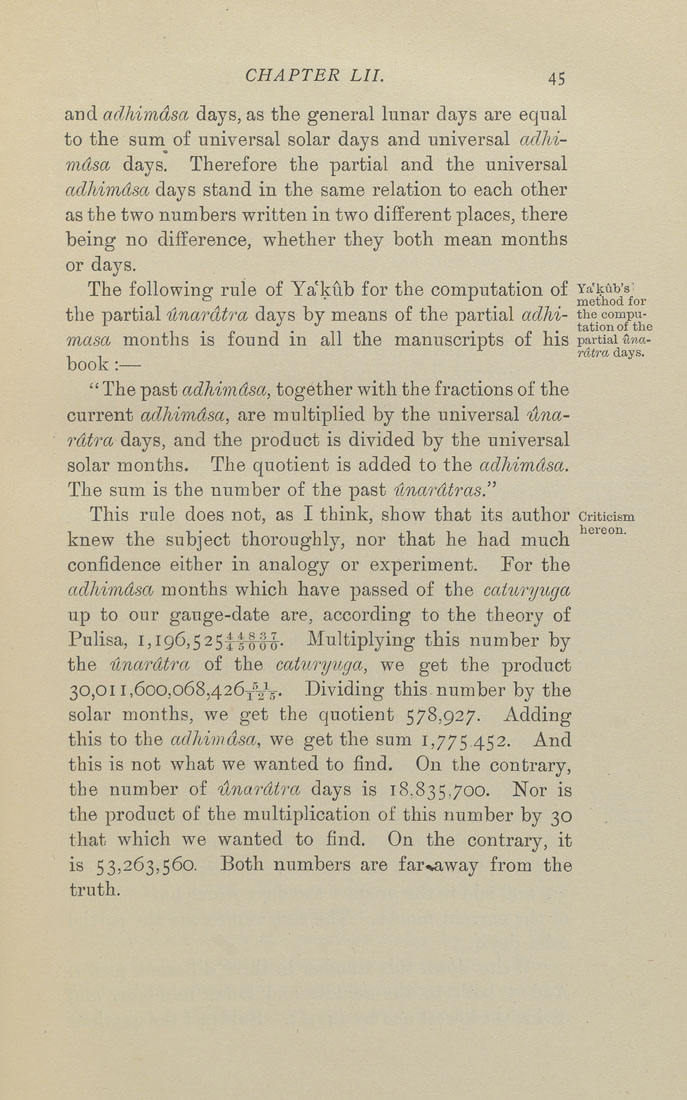CHAPTER LII. 45
and adhimdsct days, as the general lunar days are equal
to the sum of universal solar days and universal ctdhi¬
mdsa days. Therefore the partial and the universal
adhimdsct days stand in the same relation to each other
as the two numbers written in two different places, there
being no difference, whether they both mean months
or days.
The following rule of Ya'kub for the computation of Ya'kuVs:
° ^ • CI- • method for
the partial unaratra days by means of the partial adhi- the compu-
1 • f 1 • -n 1 • PI- tationofthe
masct months is found m all the manuscripts of his partial iima-
. ratra days.
book:—
"The past adhimdsa, together with the fractions of the
current adhimdsa, are multiplied by the universal iXna¬
rdtra days, and the product is divided by the universal
solar months. The quotient is added to the adhimdsa.
The sum is the number of the past imctrdtras."
This rule does not, as I think, show that its author Criticism
knew the subject thoroughly, nor that he had much
confidence either in analogy or experiment. For the
ctdhimdsa months which have passed of the cctturyitga
up to our gauge-date are, according to the theory of
Pulisa, 1,196,525^i-|-(^^. Multiplying this number by
the itnardtrct of the caturyuga, we get the product
30,oii,6oo,o68,426y^-2V Dividing this number by the
solar months, we get the quotient 578,927. Adding
this to the ctdhimdsct, we get the sum 1,775,452. And
this is not what we wanted to find. On the contrary,
the number of iXnardtra days is 18,835,700. Nor is
the product of the multiplication of this number by 30
that which we wanted to find. On the contrary, it
is 53,263,560. Both numbers are far«»away from the
truth.
|








